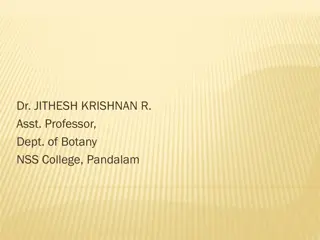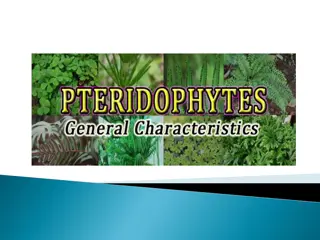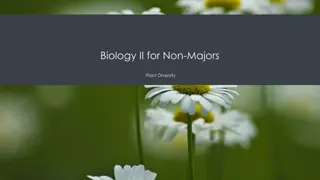Fossil Plants: Sphenophyllum and Zygopteris Anatomy
Dr. Jithesh Krishnan R, Asst. Prof. at NSS College, Pandalam, specializes in studying Fossil Pteridophytes like Sphenophyllum and Zygopteris. These ancient plants date back to the Devonian period and showcase unique stem anatomy resembling roots. Sphenophyllum had slender shoots with whorled leaves,
0 views • 11 slides
Exploring the World of Lycophyta: Club Moss and Spike Moss
Lycophyta, comprising club mosses and spike mosses, are ancient seedless vascular plants with differentiated root, stem, and leaves. They reproduce through sporophylls bearing sporangia and show convergence with flowering plant features. With about 1,200 species in existence, lycophytes have a rich
0 views • 13 slides
General Characteristics of Phycomycetes in Fungi Classes
Fungi are classified into four classes based on hyphae, spores, and reproduction methods. Phycomycetes, as an algal-like fungi class, showcase varied forms with reproduction mainly through sexual or asexual means. The thallus structure varies from one-celled to well-branched mycelium, and reproducti
0 views • 22 slides
General Characteristics and Reproduction in Pteridophytes
Majority of living Pteridophytes, including terrestrial, aquatic, xerophytic, and epiphytic species, exhibit unique characteristics in their plant body structure. They possess sporophytic plant bodies with differentiated root, stem, and leaves, showcasing a variety of forms and adaptations. Reproduc
0 views • 21 slides
Understanding Plant Diversity through Evolutionary Traits
Explore the fascinating world of land plants' evolution, from their appearance in the Ordovician period to the development of key traits such as alternation of generations, sporangia, gametangia, apical meristem, and other adaptations enabling them to thrive on land. Discover how plants have adapted
0 views • 47 slides




